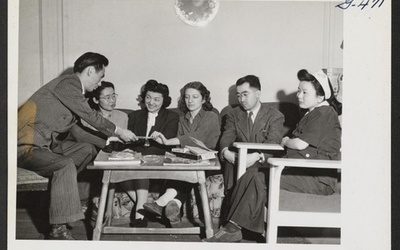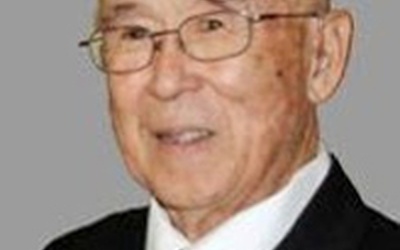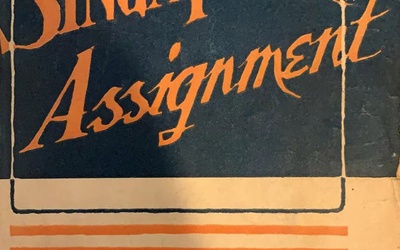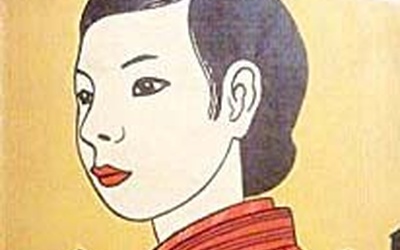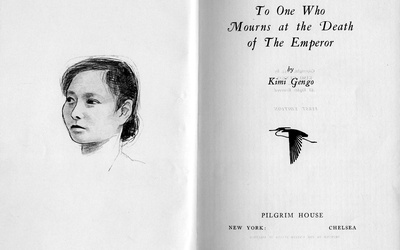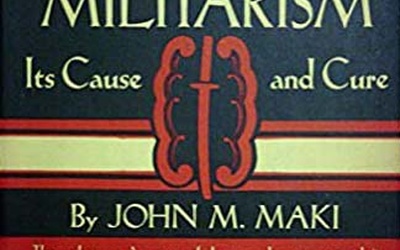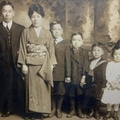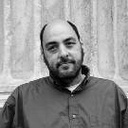
Greg Robinson
@GregGreg Robinson, a native New Yorker, is Professor of History at l'Université du Québec À Montréal, a French-language institution in Montreal, Canada. He is the author of the books By Order of the President: FDR and the Internment of Japanese Americans (Harvard University Press, 2001), A Tragedy of Democracy; Japanese Confinement in North America (Columbia University Press, 2009), After Camp: Portraits in Postwar Japanese Life and Politics (University of California Press, 2012), Pacific Citizens: Larry and Guyo Tajiri and Japanese American Journalism in the World War II Era (University of Illinois Press, 2012), and The Great Unknown: Japanese American Sketches (University Press of Colorado, 2016), as well as coeditor of the anthology Miné Okubo: Following Her Own Road (University of Washington Press, 2008). Robinson is also coeditor of the volume John Okada - The Life & Rediscovered Work of the Author of No-No Boy (University of Washington Press, 2018).
His historical column “The Great Unknown and the Unknown Great,” is a well-known feature of the Nichi Bei Weekly newspaper. Robinson’s latest book is an anthology of his Nichi Bei columns and stories published on Discover Nikkei, The Unsung Great: Portraits of Extraordinary Japanese Americans (University of Washington Press, 2020). It was recognized with an Association for Asian American Studies Book Award for Outstanding Achievement in History Honorable Mention in 2022. He can be reached at robinson.greg@uqam.ca.
Updated March 2022
Stories from This Author
From Kenny Murase to Kenji Murase: The Journey of a Nisei Writer, Scholar, and Activist - Part 2
Sept. 15, 2020 • Greg Robinson
Read Part 1 >> In August 1942, Kenny Murase arrived at Poston with his parents and brothers. He soon was invited to join the Bureau of Sociological Research (BSR), where he worked under the direction of Dr. Alexander Leighton. He also volunteered to assist JERS researcher Tamie Tsuchiyama. Meanwhile, Murase returned to journalism. First, he took the position of Acting City Editor of the inmate newspaper Poston III Press Bulletin. In addition to his editing work, he was invited to …
From Kenny Murase to Kenji Murase: The Journey of a Nisei Writer, Scholar, and Activist - Part 1
Sept. 14, 2020 • Greg Robinson
The life of Kenji Murase, a Nisei litterateur, activist, and social scientist, illustrates some of the challenges faced by Nisei intellectuals in the mid-twentieth century. Although he came from a poor farming family, and had to scramble to get an education, Murase threw himself into progressive literary and political movements. Years later, even after he became a distinguished professor, he retained his focus on community empowerment. Kenji Kenneth Murase was born in Parlier, California, near Fresno, in January 1920 (while …
T. John Fujii: Expatriate or Collaborator? - Part 2
Aug. 19, 2020 • Greg Robinson
Read Part 1 >> T. John Fujii’s career in wartime Singapore, as discussed in his book Singapore Assignment, offers a stark lesson in the ambiguity of Nisei responses to the conflict of loyalties between the United States and Japan in the era of the Pacific War. During these years, a whole cadre of educated Nisei, who had been excluded on racial grounds from employment with mainstream American businesses, and had accepted positions with Japanese firms in North America and in …
T. John Fujii: Expatriate or Collaborator? - Part 1
Aug. 18, 2020 • Greg Robinson
The story of Tatsuki John Fujii, a journeyman writer and journalist who was one of the earliest Nisei book authors, offers a rich illustration of the international connections (and complications) of Japanese Americans. Tatsuki Fujii was born in 1914 in Aichi-ken, Japan, the son of Jiryu (“Jirie”) Fujii and Toshi Fujii. He was still an infant when his family moved to California in 1915. Jiryu Fujii had been a Tendai Buddhist priest in Japan, but he converted to Christianity and …
A Union of Artists: Kimi Gengo and Bunji Tagawa - Part 2
July 2, 2020 • Greg Robinson
Read Part 1 >> Kimi Gengo Tagawa achieved early renown for her poetry, winning prizes and publishing a volume of verse while still in her twenties. Conversely, the long artistic career of her husband, Bunji Tagawa, did not take off until after his thirtieth birthday. Bunji Tagawa was born in Japan on August 13, 1904. Daikichiro Tagawa, his father, was a Japanese Christian lawyer, journalist, and statesman who later served as president of Meiji University. The elder Tagawa served multiple …
A Union of Artists: Kimi Gengo and Bunji Tagawa - Part 1
July 1, 2020 • Greg Robinson
One useful study for understanding Japanese American history would focus on “power couples,” that is, spouses or long-term romantic partners who are both accomplished figures in their own right. Perhaps the classic case in this regard is that of the Inouyes. Daniel Inouye was U.S. Senator from Hawaii for half a century. Irene Hirano Inouye, his wife, was a community leader and the founding CEO of the Japanese American National Museum. They made a formidable team. On a more modest …
John McGilvrey Maki: A friendly Reminiscence
June 16, 2020 • Greg Robinson
It was April 2004. I was attending an event at Columbia University in New York City. The organizers allotted us some extra time during the lunch break, and so I decided to go off and take a walk. I had worked at Columbia a decade earlier, and it was fun to explore the area around campus and see how the neighborhood had changed since then. It seemed that a number of the places I used to visit had vanished, but …
Leonard Broom (AKA Leonard Bloom): Scholar/Activist and Defender of Japanese Americans - Part 2
May 29, 2020 • Greg Robinson
Read Part 1 >> During the early postwar years, Dr. Leonard Bloom, Professor of Sociology at UCLA, was able to bring together scholarship and activism into creative synthesis, most notably on the question of Evacuation Claims. In 1947, as the JACL launched its campaign for compensation for losses by West Coast Japanese Americans as a result of mass exclusion, Bloom agreed to serve as an advisor. He meanwhile launched his own study of the loss question. In collaboration with his …
Leonard Broom (AKA Leonard Bloom): Scholar/Activist and Defender of Japanese Americans - Part 1
May 28, 2020 • Greg Robinson
As is well known, in the wake of Executive Order 9066 and the roundup and confinement of West Coast Japanese Americans, a group of scholars and researchers at University of California, Berkeley created the Japanese American Evacuation and Resettlement Study, a multidisciplinary academic study on the migration, confinement, and resettlement of Japanese Americans during World War II. The project, directed by sociologist Dorothy Swaine Thomas, received extensive funds through the University of California as well as from several private foundations. …
Seeking Will Thomas: An African American friend to the Nisei
May 6, 2020 • Greg Robinson
Beginning in the last decades of the 20th century, the Asian American experience became a topic of interest in mainstream American society, and in the process was enshrined in the nation’s literary production. Books by authors of all backgrounds were published and authors such as Amy Tan, Jhumpa Lahiri, and Viet Thanh Nguyen became best-sellers. During this time, the wartime confinement of Japanese Americans, which had already achieved pride of place as the most-studied subject in Asian American history, became …

